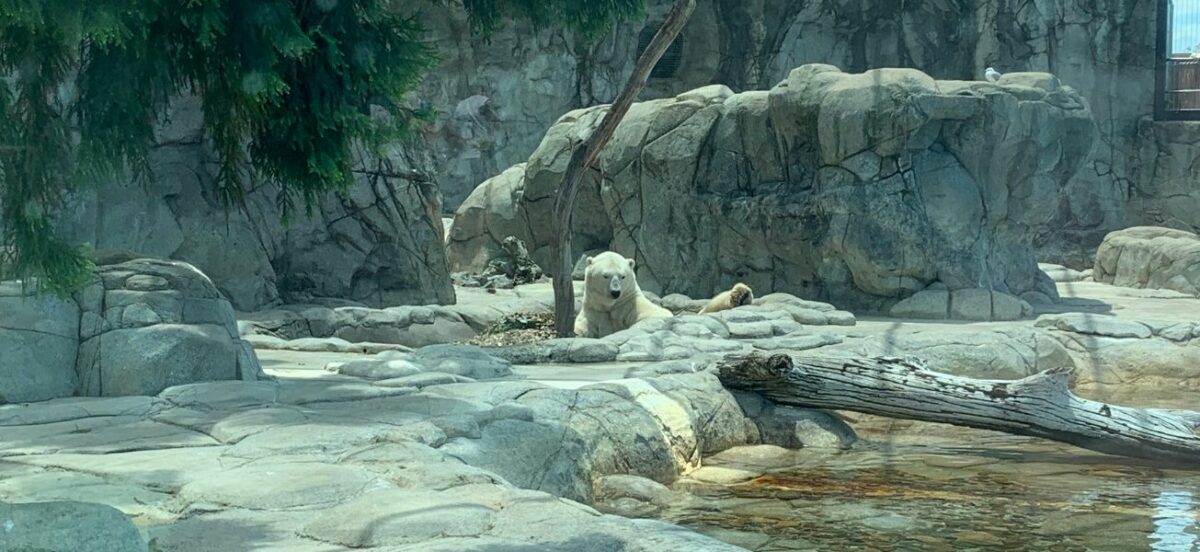For polar bears living in captivity, life in an enclosure can never compare to life in the wild. They wait to be fed by humans, instead of roaming freely on sea ice and hunting for prey. Numerous studies suggest captive bears suffer mental distress and display stereotyped behaviours, such as running or swimming in continuous circles. In the mid-1990s, Gus, a polar bear in the Central Park Zoo (New York), used to swim obsessively for hours around his pool. A therapist diagnosed him as suffering from boredom neurosis. His treatment involved toys, games, and Prozac.
Captive polar bears also suffer high infant mortality rates. Researchers, Dr Georgia Mason and Dr Ros Clubb, have found that the offspring of animals whose natural habitats are big territories, like polar bears, are more likely to die within 30 days in captivity than animals used to living in small spaces.
Last year, a polar bear cub tragically passed away at Sea World on the Gold Coast. Eight days after her birth, her health deteriorated. She was given fluids, a specialised formula and placed in a humidity crib, but there was nothing they could do to save her. Sea World Marine Sciences director, Trevor Long, recognised “it was even more sad because that little girl could have contributed to the breeding program”. This is the second time, Liya, the 16 year old polar bear, has lost one of her cubs.
Marine parks like Sea World tell the public breeding polar bears in captivity will save the species from extinction. While Sea World is correct in implying we need to do something about the declining number of polar bears in the wild, surely the high mortality rate in captivity would suggest a more appropriate strategy would be to preserve these animals habitat in the wild.
A recent Fairfax investigation, for example, found Sea World spends less than three quarters of 1% of annual ticket earnings on rescue, research and rehabilitation. And some of those rescued animals turn into performers in its shows, who in turn go on to earn the park profit.
So this international Polar Bear Day, we would like to extend an idea to Sea World. Maybe it’s time to spend more money on preserving the natural habitat of polar bears, rather than breeding them in small enclosures, in a sub-tropical climate.
